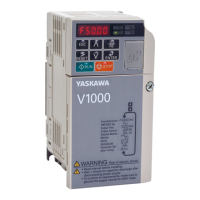Sample Program
#4 #5 #6 #7 #9
+++++
G65P9005A. .. C.. .C. .. I.. .J..K,..K...K...;
Argument Designation Part
(3) Position of Decimal Point in Argument
An argument may generally be designated with a
sign and decimal point.
For the designation with-
out decimal point, the position of decimal point is
as shown on the next page.
Address in
Metric
Inch
Argument Designation
Input Input
A, B
3
3
D, H
o
0
E
4 6
F (In G 99 mode)
1214
F (In G 98 mcde)
1012
1,
J, K, C
3 (2)
4 (3)
M, S, T
o
0
Q
o
0
R
3 (2)
4 (3)
u, v, w
I
3(2) I 4(3)
x, Y, z
3 (2)
4 (3)
The value shows the position of decimal point
as counted from the least significant digit. The
value in parentheses indicates the number of
digits that follows decimal point at the time of
parameter #6006-D5 = 1.
(4) Considerations in Argument Designation
a.
Argument designation types I and II may be
used concurrently.
If the same variable has been
designated twice, the last one is validated.
b. For both types I and II, addresses I, J, and
K should be designated in this order. The other
addresses may be designated in any order.
c. In the argument designation part, negative
sign and decimal point may be used regardless
of the address.
d. In
G65 and G66 blocks, G65 and G66 should
always be specified before each argument desig-
nation.
This holds true with the macro call by
G code.
2,8,23, 3 Overview of Macro Program Body
A macro
program body is programmed using the
combination of the following commands.
(1)
a.
b.
c.
(2)
a.
b.
(3)
a.
b.
Variables
Local variable (#1 through #33)
Common variable ( #100 through #549)
System variable ( #1000 through #5104)
operation Commands
Arithmetical operations (+, -, *, /, “ “ “)
Functional operations (SIN, COS, ROUND, . ..)
Control Commands
Branch command (IF < qualification>
GO TO n)
Repeat command (WHILE < qualification>
Do m)
Using these commands, a program which re-
quires complicated operations and conditional
judgements may be written in the general format.
Hence, the feature of user macro is to enable the
programming of the wide range of NC functions
from a simple machining cycle which is rather a
subprogram to a special, complicated canned cycle,
and the storing of these cycles in the machine.
Described below are details of the commands
mentioned above.
2. 8.23.4 Variables
Instead
of directly assigning a value to an ad-
dress in a macro program body, the address may
be designated by a variable. When this variable
is called during execution, the corresponding
value is fetched from the variable area to pro-
vide the address value.
There are three types of variables: local
variable, common variable, and system variable.
Each is identified by a variable number.
To the local variables, real numbers can be
assigned using the argument designation part of
macro call command by G65 or G66.
(1) Local Variables (#1 through #33)
A local variable is the one that is used for each
macro locally,
That is, when the local variable
is used, the variable area ( #1 through #33) is
independently allocated for each macro call,
Certain values are stored by argument designa-
tion, and the results of operations in macro are
retained ,
69

